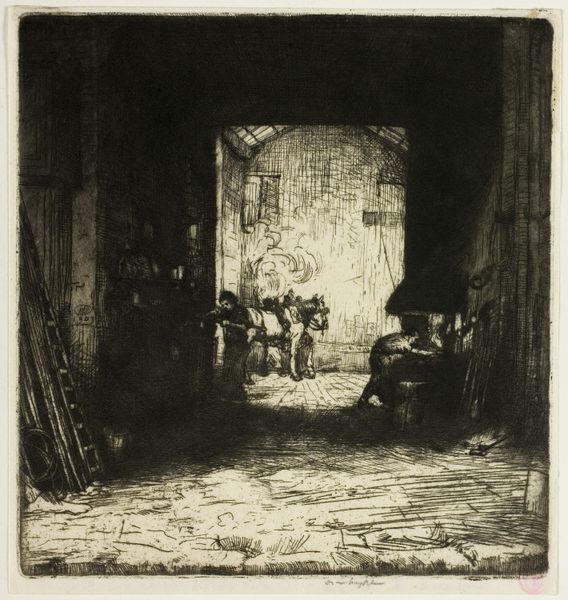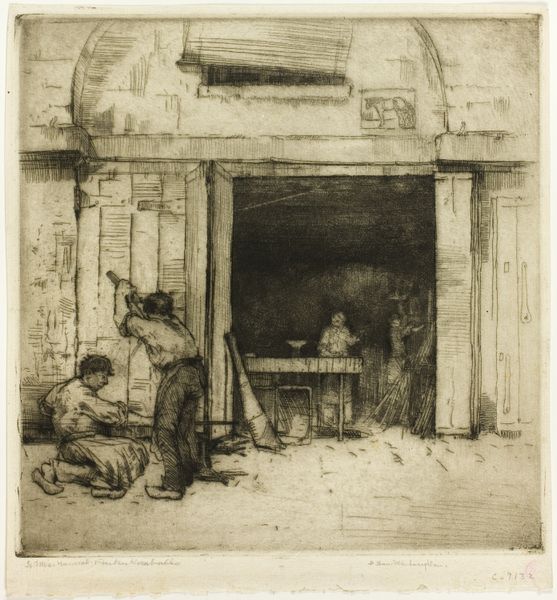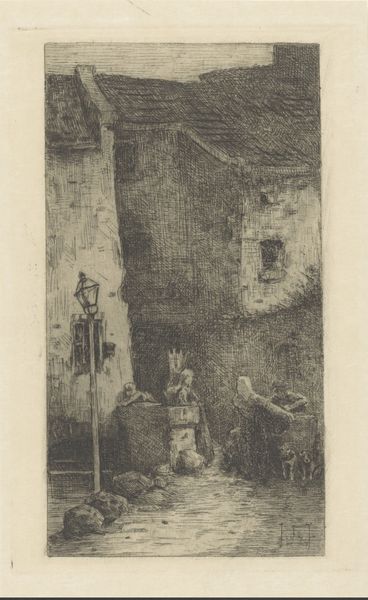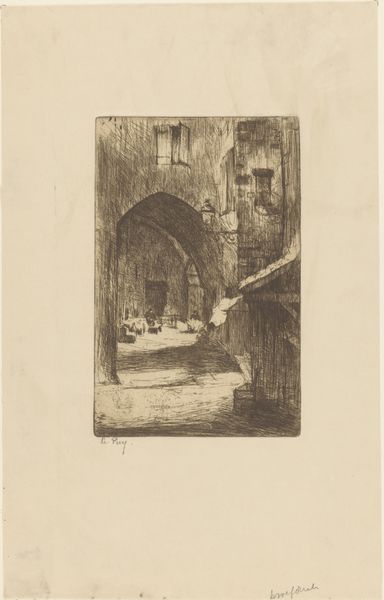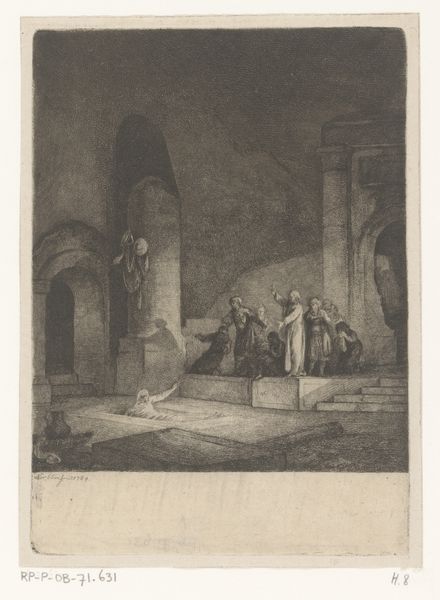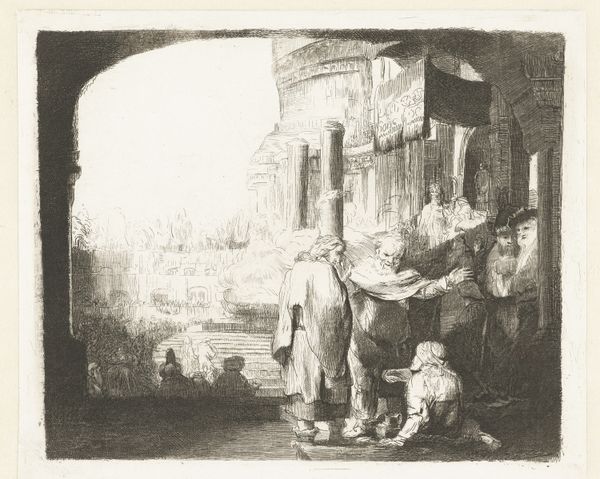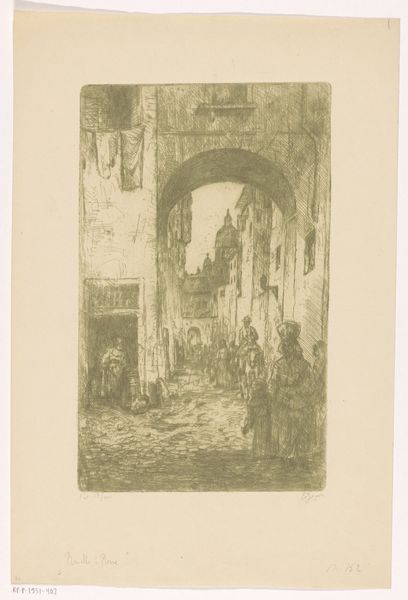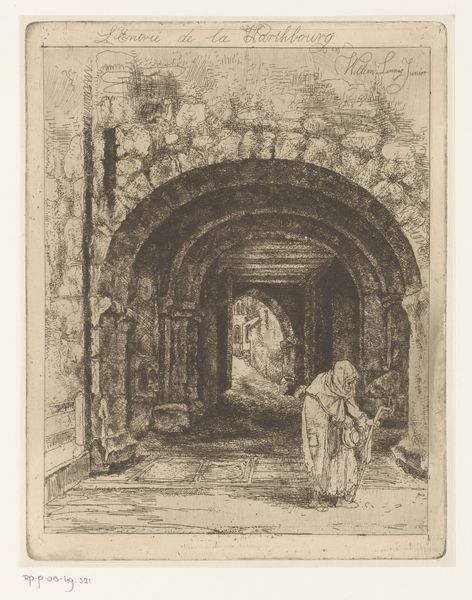
drawing, print, metal, etching, paper
#
drawing
# print
#
metal
#
etching
#
landscape
#
paper
#
genre-painting
Dimensions: 150 × 143 mm (image/plate); 165 × 162 mm (sheet)
Copyright: Public Domain
Curator: Immediately, I'm struck by the subdued tones and intimate scale of this print. It’s as if we’re peeking into a forgotten space. Editor: Indeed. This is "The Little Forge," an etching by Donald Shaw MacLaughlan, created in 1902. It provides an intriguing glimpse into a working-class setting. Curator: The composition is masterfully handled. Note how the strong horizontal and vertical lines create a stable, almost architectural framework, yet the slightly asymmetrical arrangement prevents it from feeling static. And the use of light – isn't it fascinating? The artist uses darkness not as absence, but as a tangible presence, emphasizing the weight and texture of the materials. Editor: I see the heavy shadows, yes. They highlight the economic realities of labor at the turn of the century. Consider the socio-economic context: the rise of industrialism, the plight of workers, and the romanticized view of the pre-industrial world. Prints like these often circulated within artistic circles as commentaries on such themes, offering accessible art for the rising middle class with reformist politics. Curator: Interesting. Though, for me, it's the visual relationships that captivate. Notice the rhythmic interplay between the figures and objects, and the varying depths created by the density of etched lines. It moves the eye deliberately across the plane. Semiotically, the arrangement is like a textual structure that needs deconstruction. Editor: I am struck by the horse. Why place it so centrally? Surely, to indicate it is another one of laboring classes, even a sympathetic, and burdened subject of the work. Its presence might imply some environmental concerns about animals displaced in new, urban, work settings. Curator: An intriguing thought, though I confess I find its formal role – breaking up the depth and guiding the sight to the heart of the scene – is its triumph here. Editor: These sorts of artworks give insights into an earlier era. They open a window into the labor movements that defined history, and provide a reflection of industrial changes. Curator: And what a subtle, intricate window MacLaughlan provides us here. I love to dwell on the intrinsic forms and subtle structural and spatial interactions within the depicted scene.
Comments
No comments
Be the first to comment and join the conversation on the ultimate creative platform.
